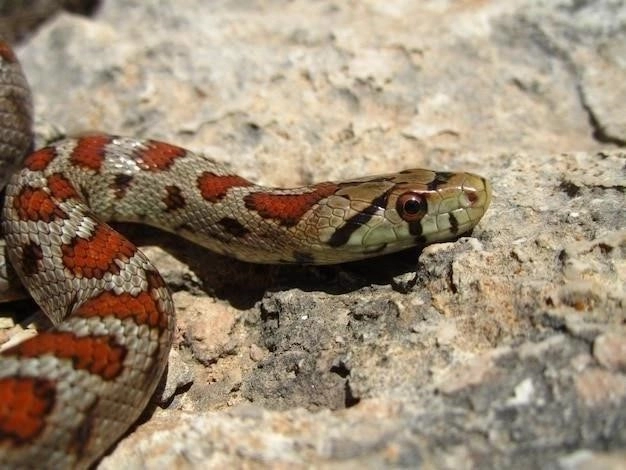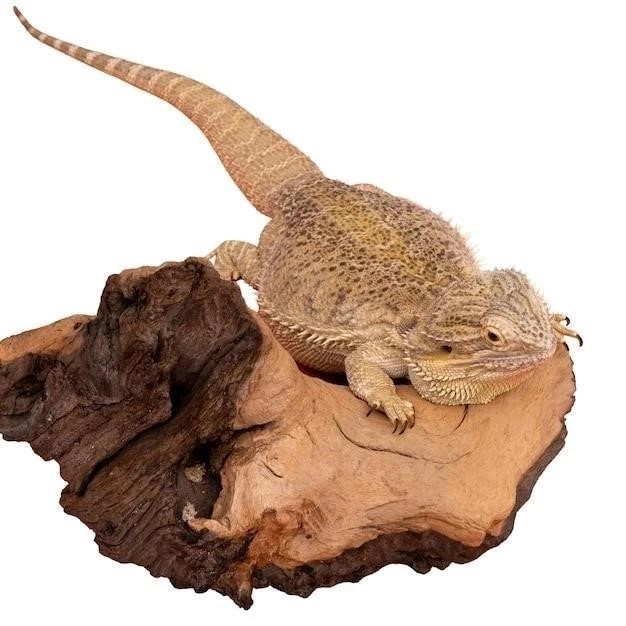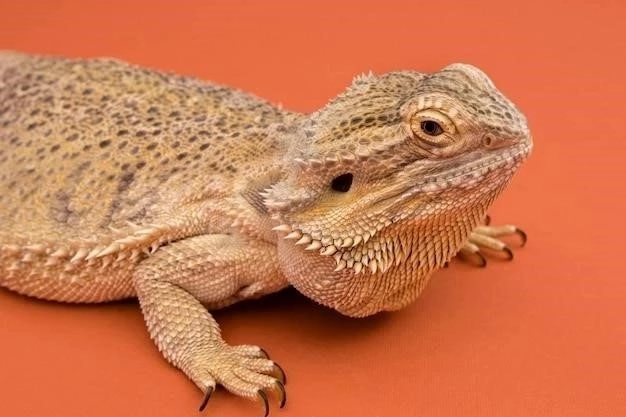The frilled-neck lizard (Chlamydosaurus kingii), also known as the frillneck lizard, frill-necked lizard, or frilled dragon, is a fascinating reptile species found in northern Australia and southern New Guinea. This unique lizard is renowned for its large, erectile frill, which it dramatically displays when threatened. Belonging to the family Agamidae, the frilled-neck lizard is the sole member of the genus Chlamydosaurus.
Physical Characteristics

The frilled-neck lizard is a relatively large lizard, with males reaching lengths of up to 85 cm (33 inches), while females are slightly smaller. This size makes them the second largest lizard in the Agamidae family, after the hydrosaurus. Their tails comprise a significant portion of their total length, often accounting for two-thirds of their body size. They are characterized by their robust build, strong limbs, and sharp claws, all of which contribute to their arboreal lifestyle.
One of the most distinctive features of the frilled-neck lizard is, of course, the large frill of skin that encircles its neck. This frill, typically folded back against the lizard’s body, can be dramatically extended when the lizard feels threatened. The frill itself is supported by long, cartilaginous rods connected to the lizard’s jaw bones. When the lizard opens its mouth, these rods automatically extend the frill, creating an impressive display that can startle predators. The frill is brightly colored, typically ranging from yellow to black and often featuring vibrant orange and red patterns. This striking coloration enhances the visual impact of the display.
Beyond the frill, the frilled-neck lizard exhibits a range of coloration and patterns across its body, often reflecting regional variations. Their bodies are typically grey-brown to orange-brown, providing effective camouflage against tree bark, their primary habitat. Males often display a black belly, a distinguishing feature from the females. This color scheme provides them with excellent camouflage, allowing them to blend seamlessly with the trunks and branches of trees.

Their heads are relatively large and angular, culminating in a short, rounded snout. Their powerful legs, each equipped with five sharp claws, aid in climbing and gripping branches. The frilled-neck lizard’s tail, while long and whip-like, is not prehensile like some other arboreal lizards. However, it plays a crucial role in balance and agility, particularly when navigating the branches of trees.

Habitat and Distribution
The frilled-neck lizard (Chlamydosaurus kingii) is endemic to Australia and New Guinea, occupying a distinct range within these geographic regions. Their distribution spans across northern Australia, encompassing the northern regions of Western Australia, the Northern Territory, and Queensland. Within this expansive Australian range, they are particularly prevalent in the Kimberley region of Western Australia, known for its rugged landscapes and diverse ecosystems.
Across the Torres Strait, their distribution extends to southern New Guinea, where they inhabit suitable habitats in the southern lowlands and foothills. This distribution pattern, confined to northern Australia and southern New Guinea, highlights the species’ specific habitat requirements and evolutionary history.
Within these geographic boundaries, frilled-neck lizards exhibit a strong preference for tropical and warm temperate woodlands. These woodlands, characterized by a mix of eucalyptus trees, acacia shrubs, and spinifex grasses, provide the ideal combination of arboreal and ground-dwelling opportunities that these lizards exploit. The open canopy of these woodlands allows sufficient sunlight to penetrate, creating a warm and thermally suitable environment for these ectothermic reptiles.
While they primarily inhabit woodlands, their adaptability allows them to thrive in a variety of habitats within their range. They are also found in savannas, characterized by grasslands interspersed with scattered trees, and in heathlands, areas dominated by low-growing shrubs and heaths. This adaptability highlights their resilience and ability to utilize different microhabitats within their broader ecological niche.

As predominantly arboreal reptiles, frilled-neck lizards spend a significant portion of their lives in trees. They favor eucalyptus trees, particularly those with rough bark that provides ample grip for their sharp claws. They utilize tree hollows and crevices for shelter, protection from predators, and as a refuge from extreme weather conditions. Their arboreal lifestyle is a key factor shaping their morphology, behavior, and ecological interactions within their habitat.
Diet and Feeding Habits
The frilled-neck lizard (Chlamydosaurus kingii) is primarily insectivorous, with its diet consisting mainly of invertebrates. They are opportunistic feeders, consuming a variety of prey items that are readily available within their arboreal and ground-dwelling habitats. Their diet demonstrates their adaptability and ability to exploit a range of food sources within their ecosystem.
Among their preferred prey are insects, particularly those found in abundance in their woodland habitats. Beetles, grasshoppers, ants, and termites constitute a significant portion of their diet. They are particularly adept at foraging for ants and termites, utilizing their keen sense of smell and sharp claws to locate and extract these colonial insects from their nests.
In addition to insects, frilled-neck lizards also consume a variety of other invertebrates. Spiders, cicadas, and caterpillars are common prey items that they opportunistically capture. Their diet reflects the diversity and abundance of invertebrate life within their chosen habitats.

While primarily insectivorous, frilled-neck lizards are known to exhibit opportunistic carnivory, incorporating small vertebrates into their diet when available. Small lizards, particularly those found on the ground or in low vegetation, can fall prey to these agile predators. They may also consume small mammals, such as rodents, if the opportunity arises, demonstrating their adaptability as predators.
Their feeding behavior involves a combination of ambush predation and active foraging. They often perch on branches or logs, patiently waiting for unsuspecting prey to pass by. Their camouflage allows them to blend seamlessly with their surroundings, making them practically invisible to their prey. Once a target is within striking distance, they quickly lunge forward, using their sharp claws and powerful jaws to capture their prey.
The Frill: Defense Mechanism and Display

The frilled-neck lizard’s most iconic feature, its expansive neck frill, is a remarkable adaptation that serves multiple functions, primarily as a defense mechanism against predators and as a visual display in social interactions. The frill’s impressive size and coloration make it an effective deterrent, while its deployment is intricately linked to the lizard’s behavior and physiology.
When threatened, the frilled-neck lizard adopts a characteristic defensive posture, transforming its appearance dramatically. It opens its mouth wide, revealing a bright yellow or pink lining, and simultaneously erects its frill. The frill, normally folded back against the body, extends around the head like a large, circular ruff, typically reaching a diameter of up to 30 centimeters. The sudden expansion of this brightly colored structure, coupled with the lizard’s gaping mouth, creates a startling visual display that can intimidate and deter potential predators.
The effectiveness of the frill as a defense mechanism lies in its ability to make the lizard appear much larger and more intimidating than it actually is. This sudden transformation, combined with hissing sounds and the lizard’s tendency to bob its head and body, can startle predators, giving the lizard a chance to escape. The frill’s coloration also plays a role in predator deterrence, as the bright colors may serve as a warning signal, advertising the lizard’s potential unpalatability or toxicity.

Beyond its defensive role, the frill also plays a significant role in social signaling, particularly during territorial disputes and courtship displays. Male frilled-neck lizards utilize their frills to establish dominance and attract mates. During territorial encounters, males will circle each other, extending their frills and bobbing their heads in a ritualized display of aggression. The size and brightness of the frill may serve as visual cues of a male’s fitness, with larger and more vibrant frills signaling dominance and attractiveness to females.
Reproduction and Lifespan
The reproductive cycle of the frilled-neck lizard (Chlamydosaurus kingii) is intricately linked to the seasonal changes of its Australian habitat, with breeding typically occurring during the warmer months, from September to October, coinciding with the onset of the rainy season. This period provides optimal conditions for egg development and hatchling survival.
During the breeding season, male frilled-neck lizards engage in elaborate courtship displays to attract females. These displays involve a combination of visual and physical cues designed to impress and entice potential mates. Males will puff out their frills, bob their heads, and chase females in a whirlwind of activity. The size and vibrancy of the frill play a crucial role in courtship, serving as a visual indicator of a male’s fitness and genetic quality.
Once a female has chosen a mate, copulation takes place, and the female will begin to search for a suitable nesting site. Frilled-neck lizards are oviparous, meaning they reproduce by laying eggs. Females typically select well-drained areas with loose soil, often at the base of trees or under logs, to deposit their clutches. These locations provide protection from predators and create a stable microclimate for egg incubation.
The female frilled-neck lizard lays between 8 and 23 eggs per clutch, with the number of eggs often correlating to the size and age of the female. The eggs, leathery and porous, are carefully buried in the nesting site, where they are left to incubate under the warmth of the sun and the surrounding environment. The incubation period typically lasts between 60 and 90 days, depending on temperature and humidity levels.
Upon hatching, the young frilled-neck lizards, known as hatchlings, emerge from their eggs fully independent and capable of fending for themselves. They possess the same instinctive behaviors as their adult counterparts, including the ability to erect their frills and forage for food. However, they are particularly vulnerable to predation during their early life stages. The lifespan of a frilled-neck lizard in the wild is not definitively known, but individuals in captivity have been documented to live for up to 20 years.










